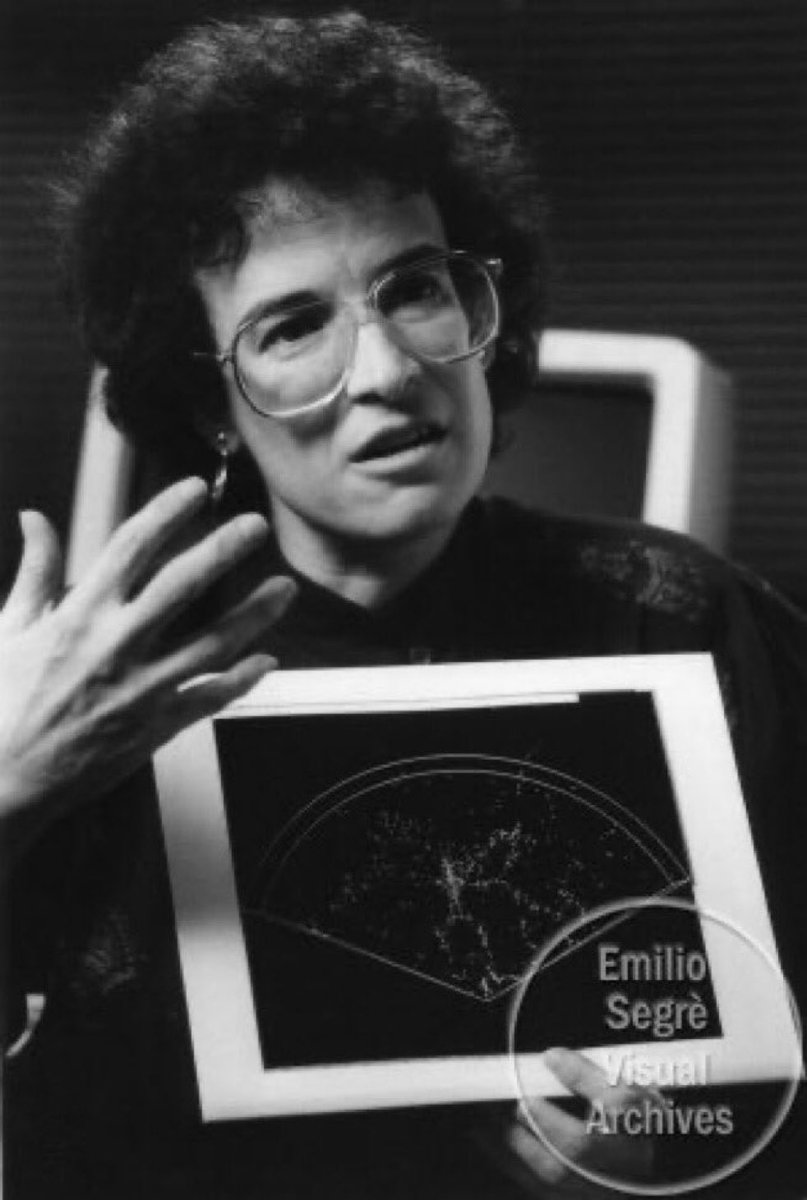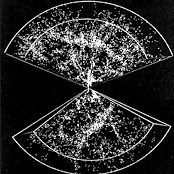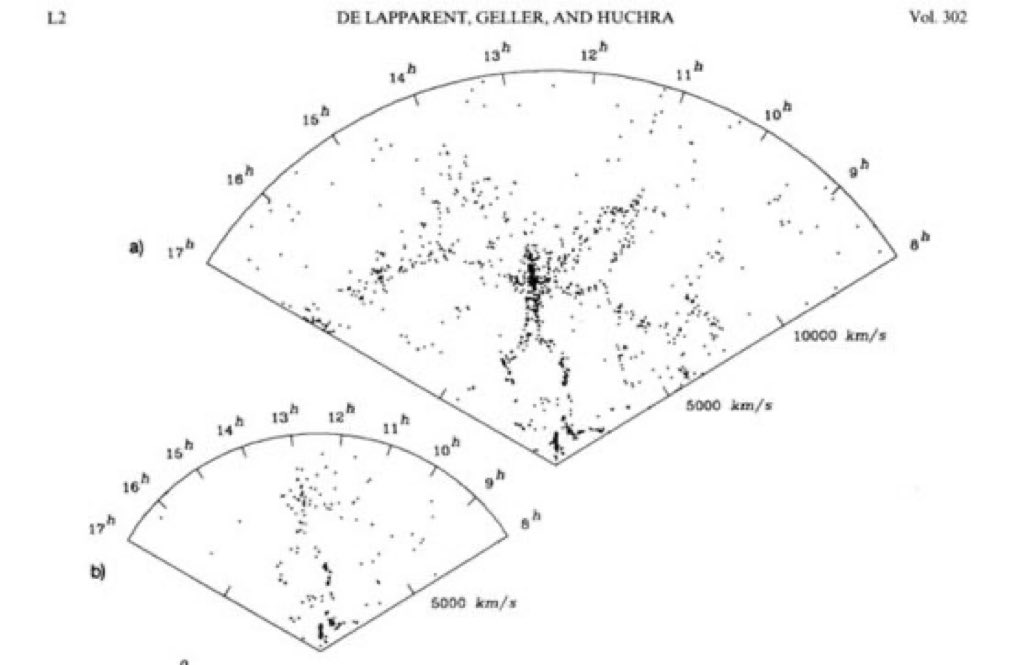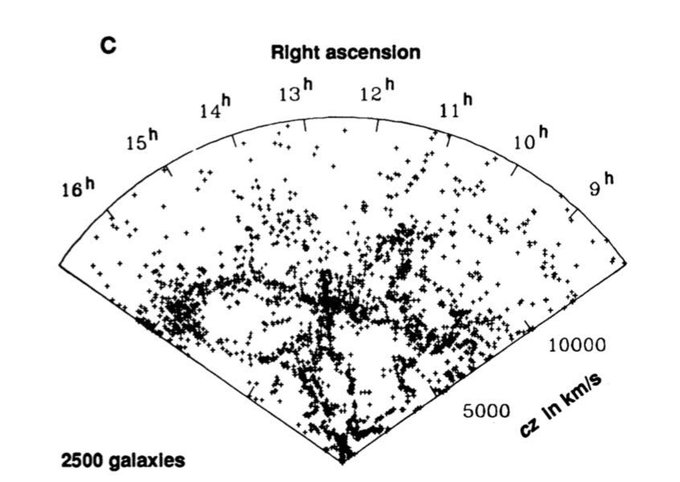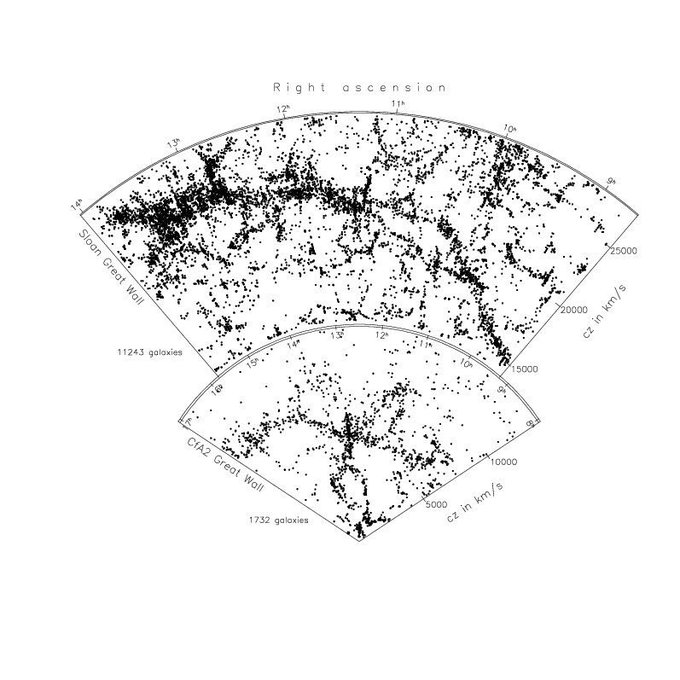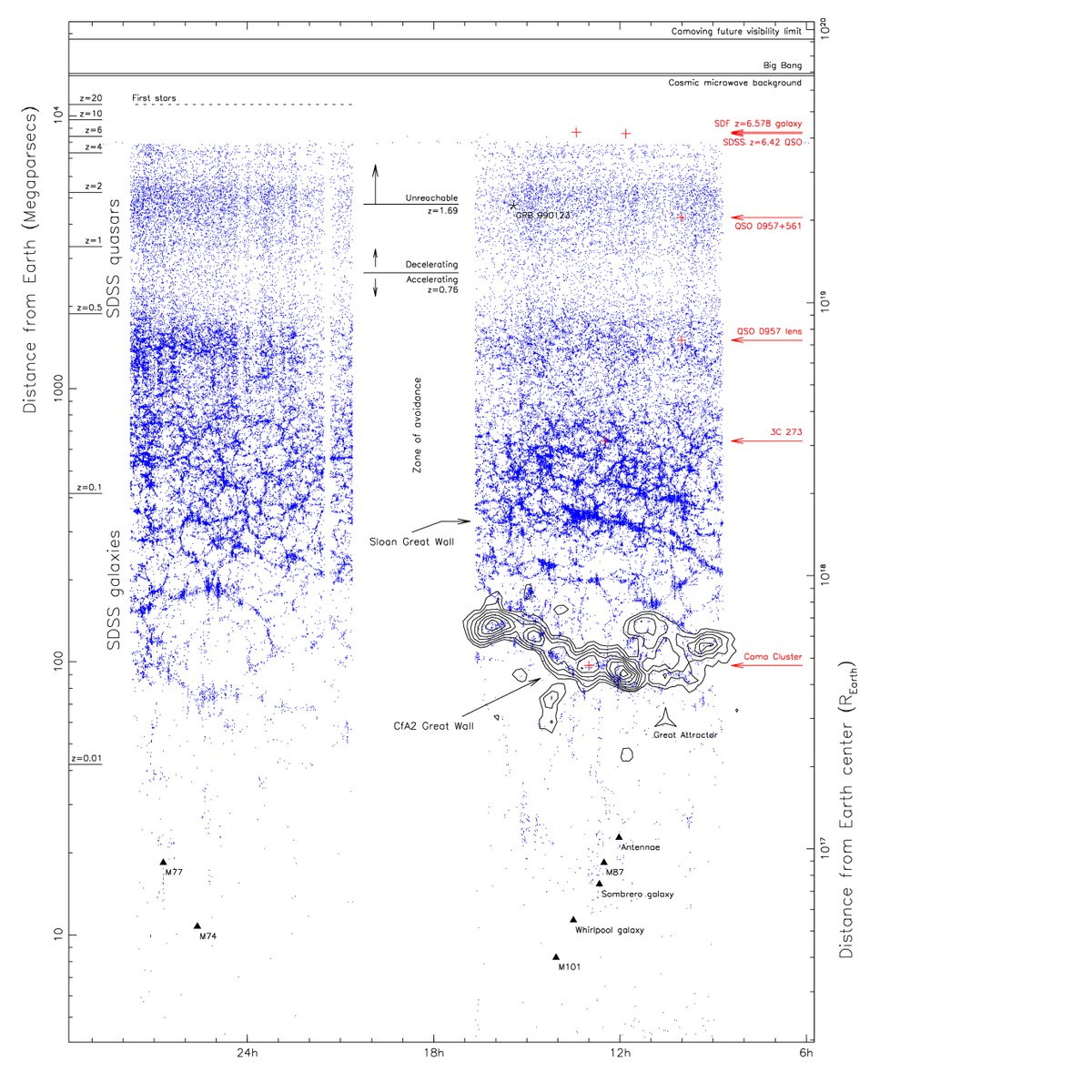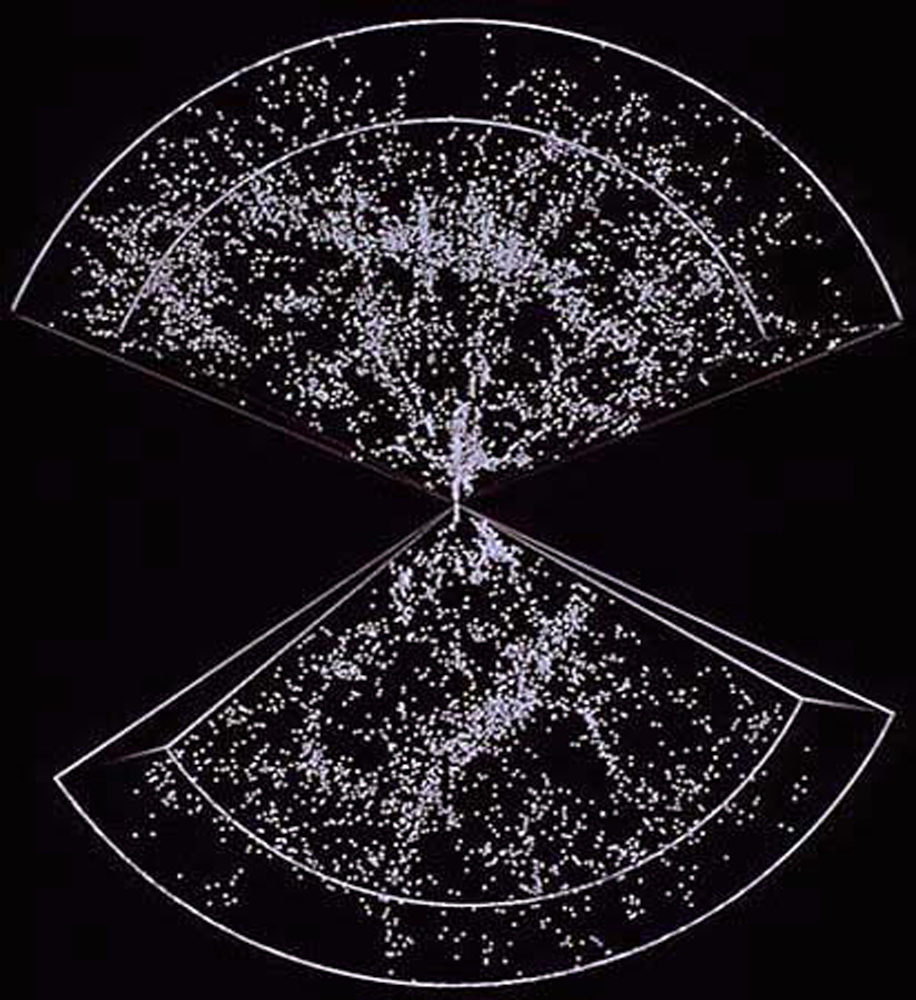Astrophysicist Margaret Geller was born #OTD in 1947. She is known for her work on the distribution of galaxies and clusters, which showed that the Universe is full of unexpected structures and great voids, and for helping the public visualize our place in the cosmos.
Image: AIP
Image: AIP
Beginning in 1985, Geller, John Huchra, and Valerie de Lapparent began mapping the location of galaxies in pie-shaped sectors of the sky.
For a long time, it was assumed that galaxies would be distributed throughout space in a more or less uniform way. But as astronomers looked they began to see indications of structure in some parts of the sky, great empty regions in others.
The results of the first survey by de Lapparent, Geller, and Huchra were published in The Astrophysical Journal in 1986. The title of the paper was "A Slice of the Universe."
http://adsbit.harvard.edu//full/1986ApJ...302L...1D/L000001.000.html
http://adsbit.harvard.edu//full/1986ApJ...302L...1D/L000001.000.html
Instead of a smooth distribution, Geller and her collaborators saw galaxies clustered along delicate filaments that outlined vast and nearly empty voids.
Geller said that it looked like a “kitchen sink full of soap suds.”
Figure: de Lapparent, Geller, Huchra (APJ, 302:L1-L5)
Geller said that it looked like a “kitchen sink full of soap suds.”
Figure: de Lapparent, Geller, Huchra (APJ, 302:L1-L5)
Over the next few years Geller and her collaborators extended their surveys, cataloguing more galaxies and adding sectors above and below the original wedge.
They uncovered additional structures, including a massive filament of galaxies running across the wedge that they dubbed the "Great Wall." It is hundreds of millions of light years long and wide.
Figure: Geller, Huchra
https://science.sciencemag.org/content/246/4932/897
Figure: Geller, Huchra
https://science.sciencemag.org/content/246/4932/897
Geller and Huchra's maps dramatically illustrated our changing ideas about the layout of the Universe. Instead of a smooth distribution of matter, they showed rich and delicate structures laced across unexpected voids.
At the same time these papers were being published, Geller was collaborating on short films that explained the discoveries to the public: "Where the Galaxies Are" in 1989, and "So Many Galaxies –– So Little Time" in 1992. I haven’t been able to find copies online, unfortunately.
Here's another map, with data from subsequent surveys, showing both the CfA2 Great Wall found by Geller and Huchra, and the Sloan Great Wall identified by Gott, Juric, et al in 2003.
Figure: Gott, Juric
https://www.astro.princeton.edu/universe/
Figure: Gott, Juric
https://www.astro.princeton.edu/universe/
However, it's not clear whether the Sloan Great Wall qualifies as a single structure like the Great Wall discovered by Geller and Huchra. The latter is gravitationally bound, while the former is not.
While we are here talking about the structure of the cosmos, have a look at this fantastic logarithmic map of the universe by Gott and Juric.
https://www.astro.princeton.edu/universe/
https://www.astro.princeton.edu/universe/
Here's the part with really large distances on it –– 10 to 10,000 megaparsecs –– that shows the Great Wall.
Image: Gott, Juríc, Schlegel, Hoyle, Vogeley, Tegmark, Bahcall, Brinkmann ( https://arxiv.org/abs/astro-ph/0310571)
Image: Gott, Juríc, Schlegel, Hoyle, Vogeley, Tegmark, Bahcall, Brinkmann ( https://arxiv.org/abs/astro-ph/0310571)
Happy birthday to Margaret Geller. In my opinion, the contributions she and her collaborators made to our understanding of the large-scale, three dimensional structure of the Universe are as important as Hubble expansion and the cosmic acceleration.
Image: Geller / SAO
Image: Geller / SAO
A little nerdy aside. I first wrote a thread about Dr. Geller in 2017. I think her work should be more widely known by the public, so every few years I try to write a little appreciation. If folks add her to an astro lecture or mention her to their students then I succeeded.
Anyway, a few months after that thread one of her students showed it to her. She wrote me a nice email thanking me and inviting me for coffee next time I'm in Boston.
It was one of those moments where the grown up scientist sort of melts away for a moment and the message is received by the nerdy kid who read a popular account of her work and daydreamed about the cosmos. It was really thrilling!

 Read on Twitter
Read on Twitter